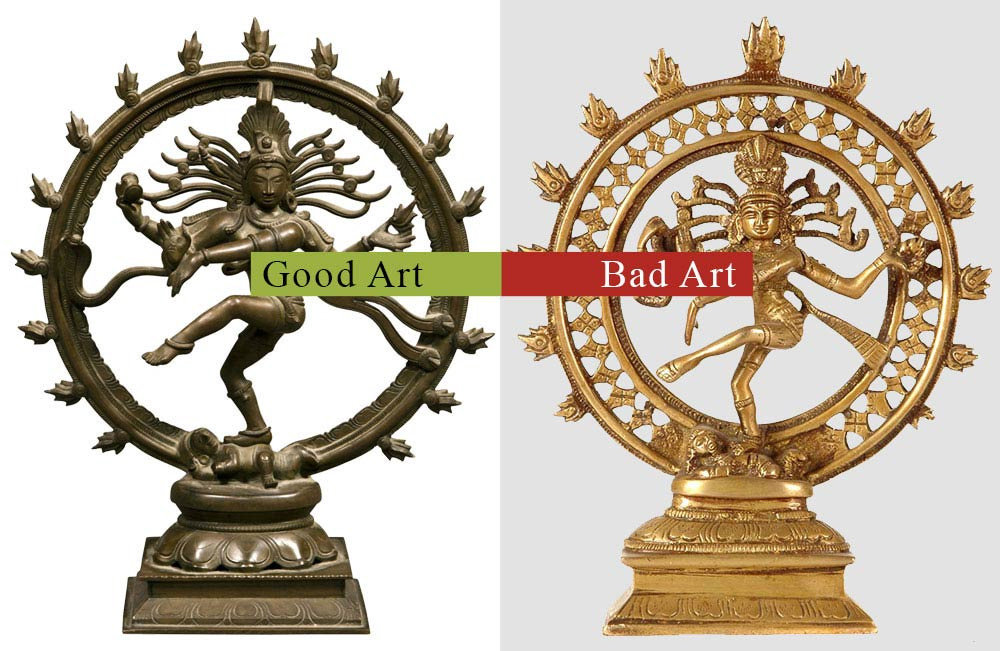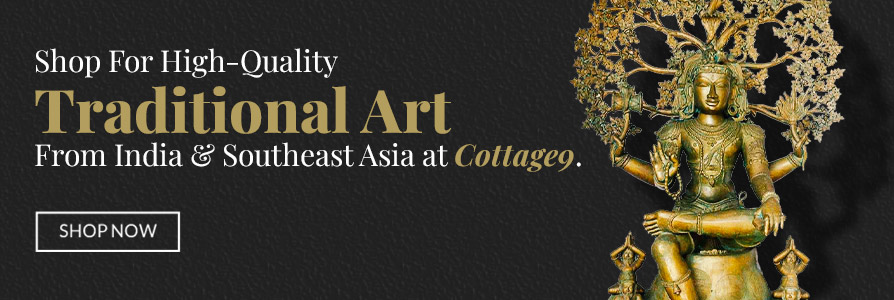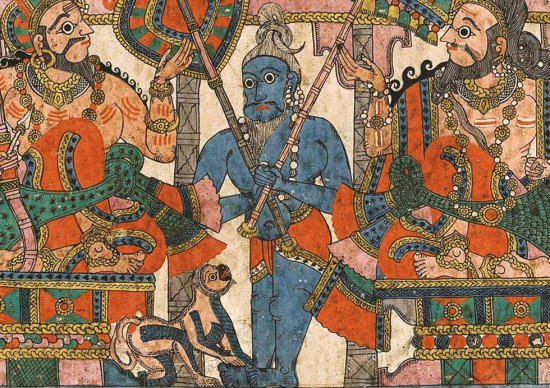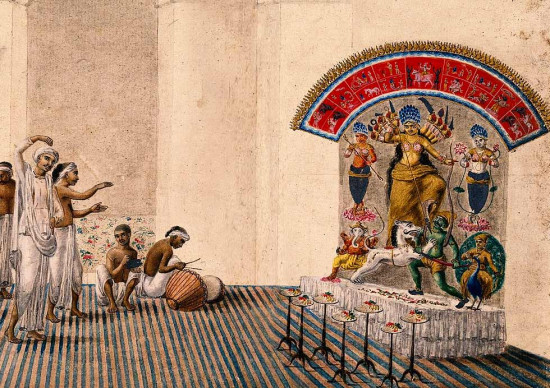
When we think of art we simultaneously think of beauty and prosperity.
Just like beauty can degenerate into ugliness and prosperity to poverty, even art can come out looking deformed, opposed to what it could have been.
So there is such a thing called Bad Art.
Just like beauty can degenerate into ugliness and prosperity to poverty, even art can come out looking deformed, opposed to what it could have been.
So there is such a thing called Bad Art.

There are three standards that every work of art must conform to:
Method
Fidelity
Theme
This article shall explain the significance of all three for the benefit of our visitors.
Method
Fidelity
Theme
This article shall explain the significance of all three for the benefit of our visitors.
Method
Every art has a specific medium through which it can be expressed best.
The medium can be anything: metal, wood, clay, glass, stone and so on.
Since each medium has it’s own specific properties a particular technique is required to both process – making it available to be transformed – and create art out of it.
This methodology is pinvariably a sequence of important steps leading to the final work.
The extent to which any step is compromised creates a proportional deformity in the product.
These techniques have evolved, been refined and fine-tuned over a large span of time and are a result of contributions from generations of artisans who have created art using the same methodology.
For example Chola Bronzes – an art style native to Tamil Nadu, involves a highly sophisticated Lost Wax method. A bronze sculpture can only be called Chola Bronze when it is created with the same exact method and style.
It is therefore important to review any art to ensure that its type also matches its method.
The medium can be anything: metal, wood, clay, glass, stone and so on.
Since each medium has it’s own specific properties a particular technique is required to both process – making it available to be transformed – and create art out of it.
This methodology is pinvariably a sequence of important steps leading to the final work.
The extent to which any step is compromised creates a proportional deformity in the product.
These techniques have evolved, been refined and fine-tuned over a large span of time and are a result of contributions from generations of artisans who have created art using the same methodology.
For example Chola Bronzes – an art style native to Tamil Nadu, involves a highly sophisticated Lost Wax method. A bronze sculpture can only be called Chola Bronze when it is created with the same exact method and style.
It is therefore important to review any art to ensure that its type also matches its method.
Fidelity
Every art has a style or a family if you will.
Style of an art is determined by the consistency in all the attributes of an artwork.
Cognizing a style of art through consistency is what we broadly call ‘an eye for art’. This is a subtle faculty and only comes when you have had a chance to review much art with interest over a good span of time.
Style is what differentiates a Picasso from a Raja Ravi Varma portrait, though the subject of both could be common.
So if even a single brush-stroke in the style of one is transposed on the other the result would be a hybrid. And that out-of-style stroke would stand out struggling to fit in the rest of the picture.
A lot of ‘artwork’ is sold these days where such fusions are deliberately adopted in the name of artistic experiment.
Such work does sell unfortunately and poses a threat to the purity of existing art styles.
Then there is another form of distortion that targets the subject of the art.
A Bronze Nataraja sculpture perhaps best represents the world famous Chola art.
The four-armed Nataraja holds a Drum in his top right hand and a Flame Cup in the top left.
The graceful stance of this sculpture, the fluidity and strength in limbs and thorough detail is a feast to an interested eye. There is also a wealth of philosophical and mythological meaning associated with it.
Imagine if the head of this sculpture is replaced with that of Buddha.
Even if the statue is flawless otherwise, it will have no identity whatsoever. It will even be hard to say whose statue it is.
There are hosts of such statues in the market showing Ganesha playing violin, Shiva wearing goggles and so on, thoughtlessly minted in the name of novelty.
They are sold as ‘Masala Statues’ and may show up at even the most reputed of art shops.
This is real Bad Art that is both infidel and wanton.
Finally there is minted art. A master-mould is used to produce piece upon piece in metal, plastic, Plaster-of-Paris and such.
We strongly recommend that you do not buy such pieces devoid of all character for yourself or another.
Nothing can beat traditional hand-made art and this is best appreciated by the auto company Ferrari that still produces each and every of her engines using the manual Lost Wax method.
Is it then a wonder that a Ferrari only appreciates in value with time?
Style of an art is determined by the consistency in all the attributes of an artwork.
Cognizing a style of art through consistency is what we broadly call ‘an eye for art’. This is a subtle faculty and only comes when you have had a chance to review much art with interest over a good span of time.
Style is what differentiates a Picasso from a Raja Ravi Varma portrait, though the subject of both could be common.
So if even a single brush-stroke in the style of one is transposed on the other the result would be a hybrid. And that out-of-style stroke would stand out struggling to fit in the rest of the picture.
A lot of ‘artwork’ is sold these days where such fusions are deliberately adopted in the name of artistic experiment.
Such work does sell unfortunately and poses a threat to the purity of existing art styles.
Then there is another form of distortion that targets the subject of the art.
A Bronze Nataraja sculpture perhaps best represents the world famous Chola art.
The four-armed Nataraja holds a Drum in his top right hand and a Flame Cup in the top left.
The graceful stance of this sculpture, the fluidity and strength in limbs and thorough detail is a feast to an interested eye. There is also a wealth of philosophical and mythological meaning associated with it.
Imagine if the head of this sculpture is replaced with that of Buddha.
Even if the statue is flawless otherwise, it will have no identity whatsoever. It will even be hard to say whose statue it is.
There are hosts of such statues in the market showing Ganesha playing violin, Shiva wearing goggles and so on, thoughtlessly minted in the name of novelty.
They are sold as ‘Masala Statues’ and may show up at even the most reputed of art shops.
This is real Bad Art that is both infidel and wanton.
Finally there is minted art. A master-mould is used to produce piece upon piece in metal, plastic, Plaster-of-Paris and such.
We strongly recommend that you do not buy such pieces devoid of all character for yourself or another.
Nothing can beat traditional hand-made art and this is best appreciated by the auto company Ferrari that still produces each and every of her engines using the manual Lost Wax method.
Is it then a wonder that a Ferrari only appreciates in value with time?
Theme
No art can be produced without a subject. A subject can be a thing, a person or a scene.
Since a portrait of a brooding nude generally should not have a cheerful party scene in the background, we can be sure that art always expresses through a theme and consistent one at that.
A true work of art must have a theme.
So while buying any art make sure that you are able to figure out what the thing is all about or the vendor should be able to explain it to you.
This becomes all the more important when you are buying abstract art.
Ask questions about the work, regard it closely section-wise and then overall. You should see a consistent pattern emerge in the work, like a meaningful story.
Once convinced; go ahead and acquire it.
Since a portrait of a brooding nude generally should not have a cheerful party scene in the background, we can be sure that art always expresses through a theme and consistent one at that.
A true work of art must have a theme.
So while buying any art make sure that you are able to figure out what the thing is all about or the vendor should be able to explain it to you.
This becomes all the more important when you are buying abstract art.
Ask questions about the work, regard it closely section-wise and then overall. You should see a consistent pattern emerge in the work, like a meaningful story.
Once convinced; go ahead and acquire it.









